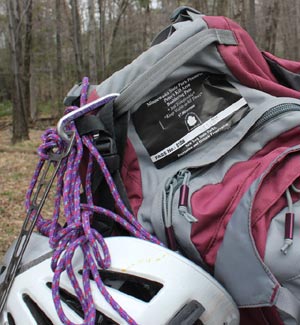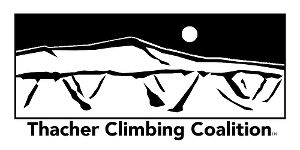
Frequently Asked Questions Last Year:
When will be the opening day?
A: We don’t know yet, 2017 spring is a likely time. We are waiting for NYS internal legal work to finish.
How can I help?
A: See our Support Page for the various ways.
I’ve hiked there before and I remember a lot of shale,
where is the rock for climbing?
A: The Indian Ladder Trail skirts the lower part of the
limestone layers, where shale layers are exposed at eye level. The best rock for climbing is the capstone which the top 90′ of rock. Many in the Northeast are unfamiliar with limestone and sandstone sport climbing as we have in the US West.
What is the impact of climbing on nature?
A: Climbing is a low impact sport just like hiking. Climbers travel on hiking trails to access a section of cliff used for climbing. Bolts are important safety equipment which is the only semi-permanent structure. Bolts are small, not visible from a distance and can even be hard to see even when your are near them. Bolts do not cause additional erosion or damage to the rock and they last about 20 years before they should be replaced for safety reasons. Bolts have been used for many decades all over the US and Europe including national parks and areas with strict impact standards. Chances are you’ve already seen rock faces with bolts in Yosemite or elsewhere and never even knew they were there.
Will there be ice climbing too?
A: We hope. At the moment ice climbing is under review. So far there has
not been legal ice climbing in any state park since 1976. Will Gadd received special permission from parks to do the sponsored climb at Niagara Falls. That was awesome and a step in the right direction in terms of publicity. Ice climbing has always been legal in DEC-managed state parks such as the Adirondacks or Catskills.
Are we allowed to scout routes or boulders?
A: No, anyone caught off trail right now will be ticketed
and this can hurt the effort. We already have extensively photographed
the cliffs from the ground and air so there is not any need for more information.
Can I help make new routes?
A: Only those with extensive past experience with this type of rock are allowed currently under a permit system which we are working on. This area is not a free-for-all like Shelf Road, CO was in the 1980s, or as many BLM/National Forest climbing areas started in the 80s and 90s.
My family or my organization has land there with cliffs, I’d like to establish climbing, what can we do?
A: If you are interested in establishing climbing for your organization there are many ways to set up climbing which will protect you from liability but still give you the quick access you need for your programs. As far as route building that is niche skill on this type of rock and we recommend you contact us so we can connect you with experts.
I own land next to park, how will climbing affect me?
A: Climbers are low impact users unlike some of the summer users you see in the park. They don’t leave piles of trash or forage for wood and rare plants – all of these things are concerns of locals. Climbers will park at the top parking lots and their focus is on the cliffs where they spend all day in a small area. They don’t have interest in wandering around on the slopes below as some hikers and hunters have done. If you own land nearby the climbers may be an opportunity for you to use Air B&B, or open up some of your farm or woodland to climbers who are looking for camping.
I own a business in Altamont/Voorheesville, will climbing
help me?
A: Yes if you have services that climbers will use. This
includes sale of food, outdoors equipment, and fuel. See our sponsors page if you want your business highlighted.
How will climbing add to crowds in the park?
A: Climbers are by far not the largest user group on holidays, so climbing will not visibly add to congestion on the road or the hiker congestion on the Indian Ladder Trail on summer weekends. Climbers will have their own section of the park to work with, separate from the casual hiker crowd which use the ILT.

